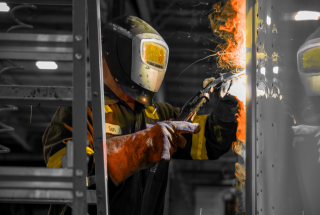3 Ways to Improve Your Safety Leadership
There’s a misconception that not everyone can be a leader. In the fleet maintenance industry, we’ve found this to not be true – anyone can be a leader if they are willing to put in the work. In our line of business, being a leader in safety is something we all aspire to be.
A safety leader is someone who influences good decisions and positive behaviors. The benefits of this type of leadership are huge – not just for you, but for your coworkers and the people you lead as well. Here are some of the key characteristics than can turn any person into a leader in safety:
Introduce yourself by your first name – not your title
This may seem like an obvious statement, but this small gesture goes a long way in building authentic relationships. When you extend your hand and introduce yourself by your name, people recognize that they are dealing with a person, not a position or title.
Leading people means caring about them – making their safety your priority. If you’re only focused on the safety record that you’ll be judged by, then it’s all about you and the people you lead will be more likely to make mistakes.
Recognize what your people are doing right
Every championship sports team has a coach that believes in their players. And the players believe in the coach. A good coach knows each player’s strengths and designs game plans to emphasize and acknowledge these strengths. The coach is not focused on the player’s shortcomings
Similarly, if you’re going to build a culture of safety, you need the buy-in of your team. That will require learning their strengths and praising their accomplishments. It only takes one bad moment to tear down a great team.
Be interesting and engaging
You become interesting to your team the moment that you become interested in them. Treat the people in front of you as the important in your life at that moment and make them feel it. Don’t just present the results, but make them feel like they matter and make a difference – because they do. This will promote a culture of transparency and accountability.
These three, easy to implement changes in your behavior can turn you into a leader in safety. Remember to build relationships based on authenticity and make the safety of your team your priority – the rest will follow suit.



